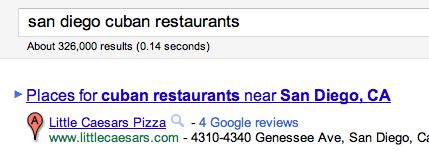-
Digging out from the deluge of email
I've been dealing with email for about 20 years now and the amount of email that I (and everyone) receive has increased over that time. In addition, the email has become more and more important. It's no longer forwarding of jokes, continuing chain letters, or just quick "hello" messages, it is absolutely vital to businesses these days.
Unfortunately people are having a hard time dealing with the deluge of email they receive. For many, every email is extremely important and when you receive 100+ email messages a day, your entire day is spent dealing with email. So some people simply just don't read or respond to email. This, of course, creates a problem for others that rely on replies. In extreme cases, I've heard of people that go on vacation and when they return, send out a message saying that they deleted all their email (on purpose) and to resend anything that is important.
I'm probably in the minority in that I handle a large amount of email everyday with very little effort. My strategy for dealing with email is quite simple. I go with the inbox zero principle in that every message that I haven't dealt with stays in the Inbox and I try to clear it everyday. Next, I skim subjects and to/cc recipients. If the message is unimportant, like out of the office or "free tomatoes", it immediately goes in the trash. If I'm in the to/cc line, I spend a few extra minutes on the message and see if I need to act on it. If I do, I try to act on it quickly so that I don't forget about it. If I'm not in the to/cc line, I see if the subject is something I need and then skim the first part of the message (I'm also a fan of "top quoting" where the most recent part of a message is at the top of the message). I'll act on it, if necessary and then move on.
I also deal with email throughout the day so that it doesn't pile up. It also doesn't hurt that I have very good time management skills and can handle a large amount of data at a time.
Maybe I should hone my skills a bit and start teaching classes "how to deal with email quickly and effectively".
-
Misclassified Restaurants in Search Engines
We don't go out to dinner all that often and when we do, we visit the same places. When we want to look for some place new, we do online searches or use sites like Yelp! Unfortunately, it seems that the results I get are not all that helpful. My wife asked me what kind of food I'd like for our anniversary dinner next week and I said Cuban food. I did a search on Google and came up with:

While I'd like to think that this is a fluke, I tried the search again today and got the same result. I'm not sure why I have so many problems looking for restaurants. Maybe all the tools out there are lacking complete, up to date, and honest information. Maybe that's a new business, but I'm not sure how to promote it to consumers that the data is better than everything else.
-
Proofreading Mass Email
Last week I changed my AT&T account to be a 900 minute plan. As part of the change, AT&T sent email confirming it. The automatic email, however, was not proofread. The bullet points should have been alphabetical (in English), numerical, or simply bullets. AT&T sent the email with the bullets being Hebrew letters.

Also, the link in the email goes to a server that doesn't exist.
-
Too many ways to contact people
When I was in college, I thought it was cool to have multiple email addresses; at a time when most people didn't have 1 address, I had at least two, so I put them in my email signature, along with my website and phone number.
These days, people have Facebook pages, LinkedIn page, Twitter address, blog, Flicker account, Google+, Skype, Email, etc. Up until today, I had never seen anyone list all these "contact" methods. Is it really necessary for anyone to list these? These days, I think if someone wants to contact you, they can find you without you explicitly telling them.
I use a work email address, a personal email address, and this blog. I'm a pretty easy person to find (it doesn't hurt that I have my own domain and my last unique isn't all that common).